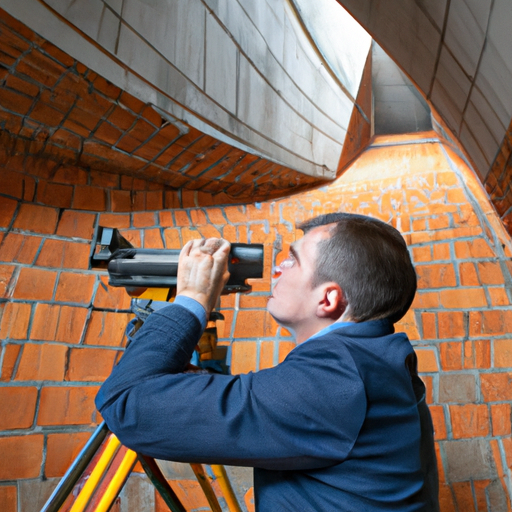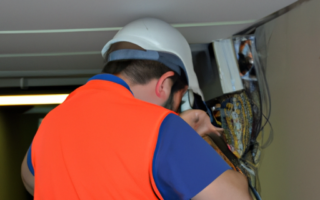Key Steps to Conducting Effective Building Inspections
Conducting building inspections is a crucial process that ensures the safety and functionality of a property. Whether you are a homeowner, a real estate investor, or a building inspector, it is essential to follow best practices to conduct thorough evaluations. Here are some key tips for an effective building inspection:
1. Prepare in advance: Before starting the inspection, gather all the necessary tools and equipment. This includes a flashlight, a notepad, a camera, a ladder, and any specialized equipment required for specific inspections.
2. Follow a checklist: Develop a comprehensive checklist of items to inspect for each area of the building. This will help ensure that no crucial aspects are missed during the evaluation. The checklist should include items such as electrical systems, plumbing, roofing, structural integrity, and safety features.
3. Check for permits and compliance: Verify that all necessary permits for construction or renovations are in place. Additionally, ensure that the building complies with relevant local building codes and regulations. This step is vital to avoid any legal or safety issues in the future.
4. Examine the exterior: Start by assessing the exterior of the building. Look for any signs of damage, such as cracks in the walls, foundation issues, or problems with the roof. Pay attention to the landscaping, drainage systems, and any potential safety hazards.
5. Inspect the interior: Move inside and inspect each room thoroughly. Check the walls, ceilings, and floors for any signs of water damage, mold, or structural issues. Test all electrical outlets, switches, and appliances to ensure they are functioning correctly. Don’t forget to examine the plumbing system, including faucets, toilets, and drains.
6. Evaluate safety features: Building inspections should also focus on safety features such as fire alarms, smoke detectors, emergency exits, and stairwells. Ensure that these elements are in proper working condition and comply with safety regulations.
7. Take detailed notes and photos: During the inspection, make detailed notes of any findings, including the location and severity of any issues. Take clear photos to support your evaluation. This documentation will be valuable when preparing inspection reports or discussing the findings with clients or property owners.
8. Communicate effectively: After completing the inspection, provide a comprehensive report to the client or property owner. Clearly communicate any identified issues, their potential impact, and recommended actions for addressing them. Use a language that is easily understood by non-experts in the building industry.
Remember, conducting effective building inspections requires attention to detail, knowledge of building codes, and adherence to best practices. By following these tips, you can ensure a thorough evaluation and contribute to the safety and functionality of the property.
Expert Advice for Ensuring Comprehensive Building Evaluations
When it comes to building inspections, thoroughness is key. Whether you are evaluating a residential property or a commercial building, conducting a comprehensive inspection can help uncover hidden issues and ensure the safety and integrity of the structure. In this article, we will discuss some best practices for building inspections that can help you perform a thorough evaluation.
1. Start with a Preliminary Assessment:
Before diving into the inspection, it is important to conduct a preliminary assessment. This involves reviewing any available documents, such as blueprints or previous inspection reports, to familiarize yourself with the building. This step can help you identify potential problem areas and focus your inspection efforts accordingly.
2. Follow a Systematic Approach:
When performing a building inspection, it is important to follow a systematic approach. This means inspecting the structure from top to bottom, inside and out, and paying attention to every detail. Starting with the exterior, check for any signs of damage or wear and inspect the roof, walls, windows, and doors. Then move inside and examine the foundation, plumbing, electrical systems, HVAC systems, and other critical components.
3. Test All Systems and Components:
During a building inspection, it is essential to test all systems and components to ensure they are functioning properly. This includes checking electrical outlets, switches, and fixtures, running water through all faucets and toilets, testing heating and cooling systems, and inspecting the functionality of doors and windows. Testing these systems can help identify any underlying issues that may not be apparent at first glance.
4. Document Your Findings:
One of the most important aspects of a thorough building inspection is properly documenting your findings. Take detailed notes, measurements, and photographs to create a comprehensive report. This report should include a summary of your findings, as well as any recommendations for repairs or further evaluations. Clear and concise documentation will not only help the building owner understand the current condition of the property but also serve as a reference for future inspections.
5. Stay Updated with Industry Standards:
Building inspection practices and standards are constantly evolving, so it is crucial to stay updated with the latest industry developments. Attend conferences, workshops, and training sessions to enhance your knowledge and skills. Additionally, joining professional organizations and networking with other building inspectors can provide valuable insights and resources.
By following these best practices for building inspections, you can ensure a thorough evaluation of any property. Remember, the goal of a building inspection is to identify any existing or potential issues, provide recommendations for repairs, and ultimately ensure the safety and functionality of the structure.



